One thing I’ve appreciated about Bay Island Bonsai’s annual exhibits is the use of moss to cover the surface of the soil. The convention is common among bonsai exhibits in Japan and elsewhere. It gives the trees a clean look and provides some life in the case of dormant deciduous varieties like the corkbark elm below.
Corkbark elm
Moss can provide contrast to both pots and flowers.
Flowering plum
And in the case of evergreen conifers, moss can help set the scene, grounding trees in what we might imagine to be undisturbed earth.
Red pine
Shimpaku juniper
Of course, it’s hard to overlook the trees growing in the moss or the oftentimes antique containers in which they are planted.
Japanese five-needle pine in antique Japanese pot
Tsukumo cypress in antique Chinese pot
Branch structure as seen from below
When I see trees that are in relatively early stages of development, I study the branch placement to get an idea of what the tree might look like a few years down the road.
Japanese black pine
For more mature trees, I simply enjoy the age and character of the trunk.
Japanese black pine
Shore pine
One of my favorite trees with a bright future was a Chinese elm created just a few years ago from air layer. The density is already good. In time, continued refinement will showcase the trunk and convey age through the fullness of the silhouette.
Chinese elm
Shohin black pine
Shohin shimpaku juniper
Mas Nakajima displayed two suiseki art installations featuring stones with paintings. The photos don’t begin to do justice to the depth of the paintings or the overlapping colors among display elements.
Suiseki art by Mas Nakajima
Suiseki art by Mas Nakajima
And what of my maple and Western juniper? I left the trees on their own during setup and found someone had paired them in a fairly similar fashion to how I’d imagined them together. The main difference was that the juniper was turned to point slightly more to the right.
Japanese maple and Western juniper
In time, I plan to change the tree and extend the lowest branch to further emphasize the right-leaning movement so I can use the tree on the left side of the display.
Bunzan pot
Hut stone and moss
Japanese maple
The next Bay Area bonsai exhibit is coming up soon – tomorrow and Sunday at the biennial Shohin Seminar in Santa Nella, California.
Subscribe to Bonsai Tonight
New Posts Delivered Every Tuesday and Friday
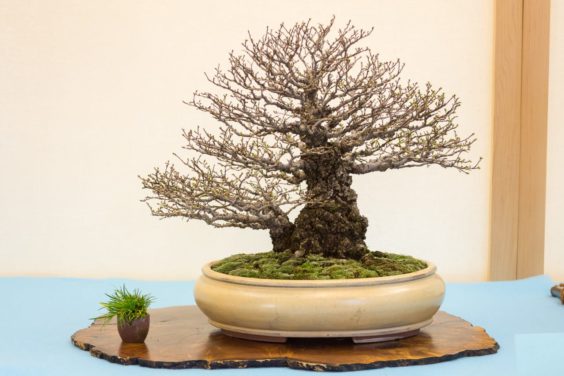
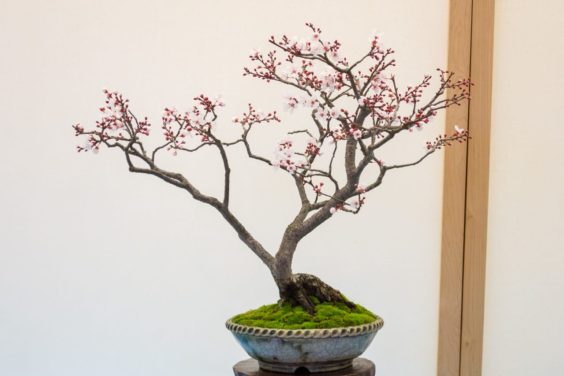
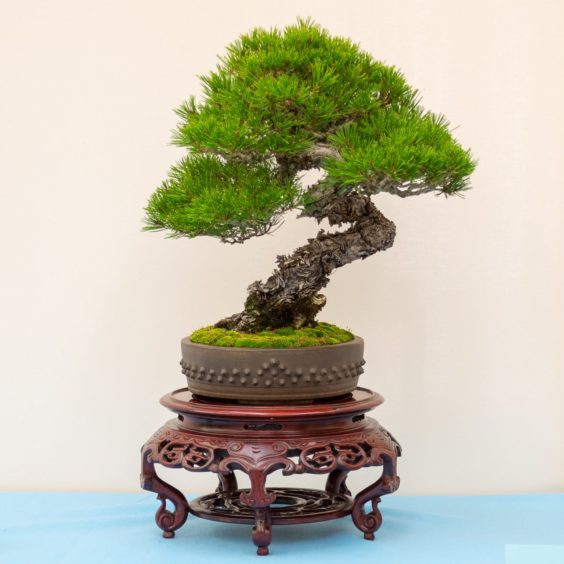
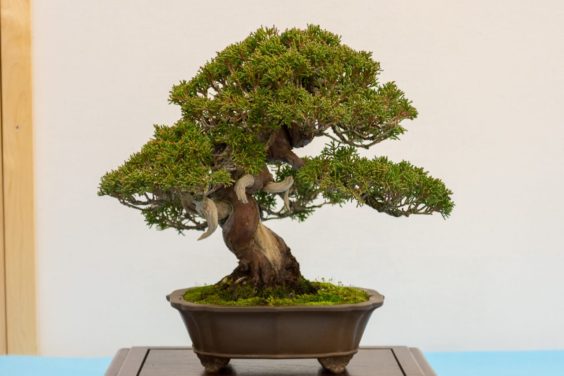
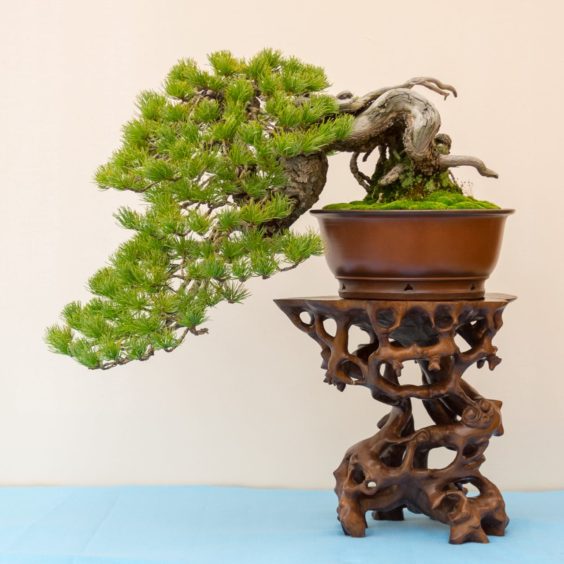
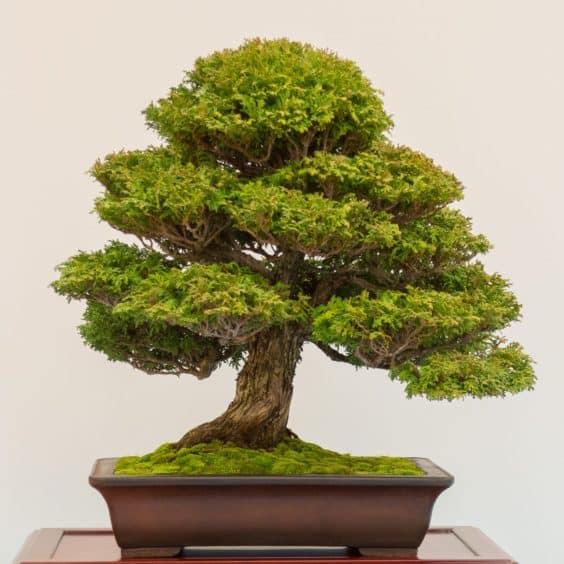
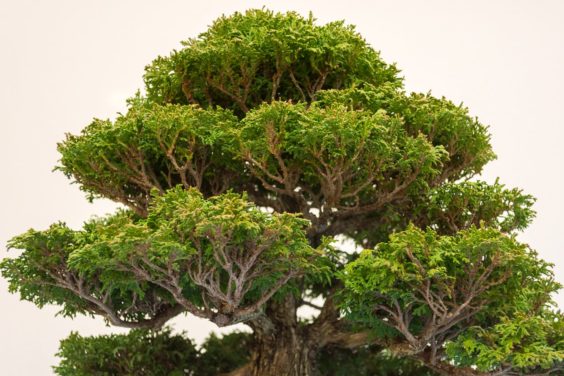
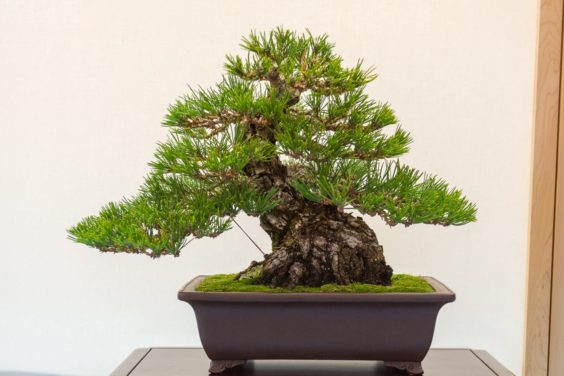
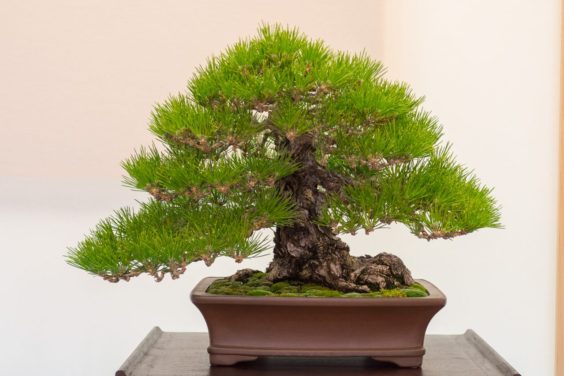
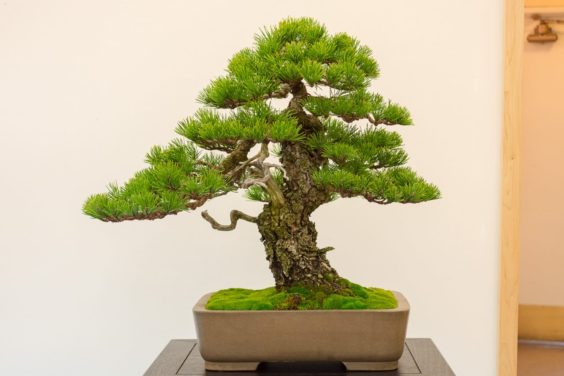
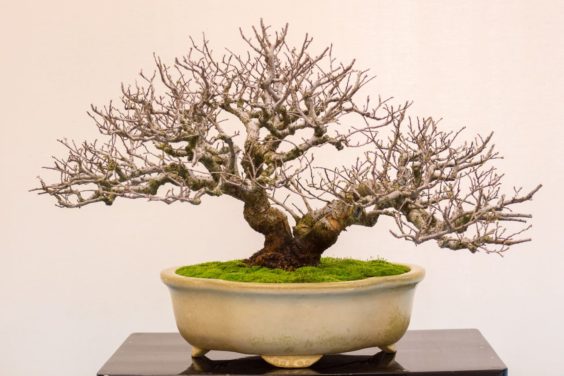
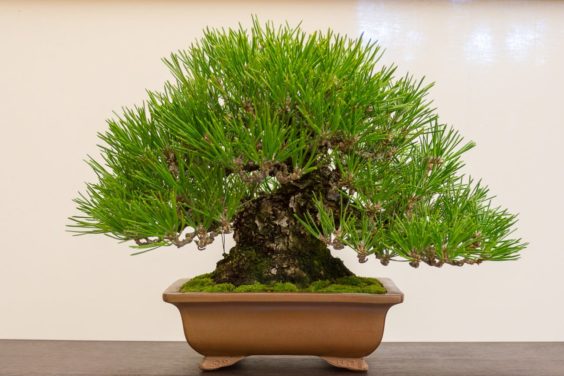
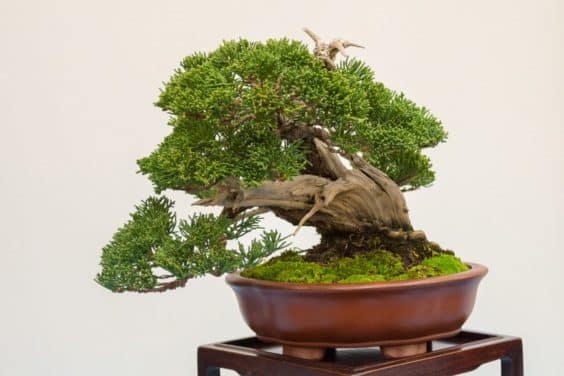
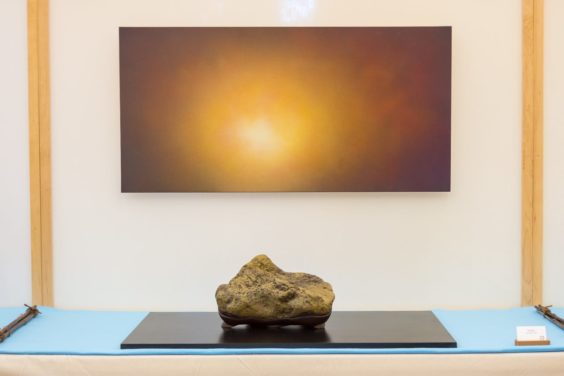
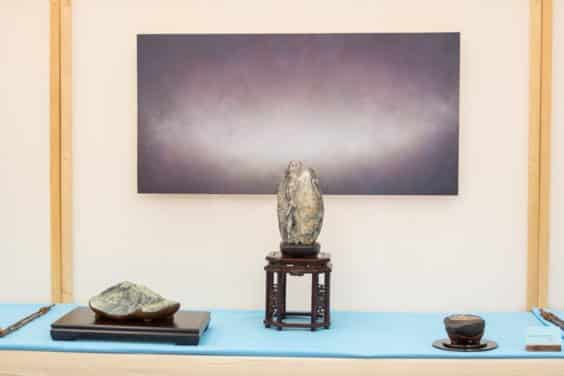
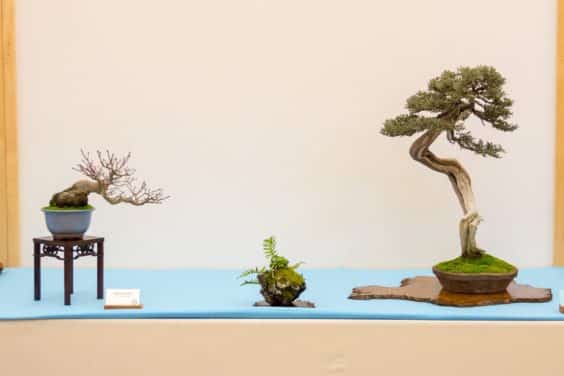
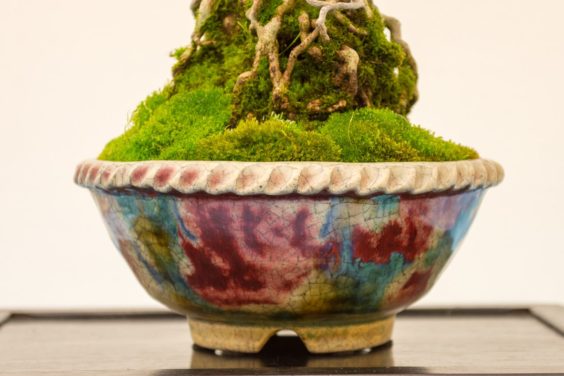


Brian McGrath says
Hi Jonas
Just a question not a criticism, but should in your display your trees be pointing at each other and not both pointing to the right .
Brian
Jonas Dupuich says
Hi Brian – thanks for the note! In general, yes, I’d want two trees displayed together to point to each other.
Which way a tree “points” can be determined several ways. The silhouette is one of the more obvious variables. The silhouette of the juniper clearly “points” to the right. Which way a tree leans is another way to determine which way a tree points. If the juniper had no roots, if would fall to the left, not to the right. Following the movement of the trunk, the tree “points” or “leans” left.
When the silhouette is at odds with the movement of the trunk, we sometimes experience dissonance, and the juniper here is a good example of this dissonance.
See some more discussion about the display here.
John Miller, Dallas says
Mr. Nakajima has developed the art of displaying suiseki to the nth degree. A lot of learning is available in those two photos.
The halo around the sun in the first picture is clipped by the border but that makes it carry into the suiseki below. Then the camera angle picks up the daiza’s reflection as a shadow from the sun. Extremely great display as was also the 2nd one.